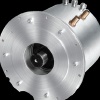Индустриален клъстер "Електромобили" - Учредители:








 |

|

|
| Актуално | За клъстера | Екип | Членове | Документи | Анализи | Услуги | Стани член | Награди | ССЕМ | Контакти |
ИКЕМ - Индустриален клъстер "Електромобили" | Четвъртък, 25.04.2024 | |
|
Assessing the Viability of Level III Electric Vehicle Rapid-Charging Stations
1. BACKGROUND 1.1 Brief Electric Vehicle History: Electric vehicles were around before gasoline cars. In the early 1900's the competing technologies for light-duty vehicle propulsion were steam, electric and gasoline power: steam cars were complex and dangerous for the average consumer to operate, while electrics had a limited range and took hours to recharge. Overcoming these troubles, gasoline came to dominate consumer vehicle propulsion for the next century. That's not to say that electric vehicles went down without a fight: Thomas Edison experimented with alkaline batteries that had a flushable electrolyte - all in the name of getting around the problem of inconvenient recharge times. At the time, the power/weight ratio of electrics was comparable to the first gasoline-powered cars; the Ford Model T was barely pushing 20 horsepower. Limited range due to long recharge times sealed the fate if the electric car. Almost a century later, battery technology has improved in both areas of energy density and recharge time. The development of lithium0based battery chemistries over the past twenty years has allowed for light, energy-dense batteries that enable electric vehicles with hundreds of miles of range on a single charge. Recharge time remains a question: while these cars have the range, tehy still take much longer to "fill-up" than a gasoline car - an inconvenience for most consumers. One answer to this problem is the Plug-In Hybrid Electric Vehicle (PHEV), which features an on-board engine/generator set to provide the electricity for longer trips once the battery has been depleted. However, until recharge-time reaches levels comparable to the time it takes to refill the tank of a gasoline car, tha mass adoption of pure battery-electric vehicles will remain in question. 1.2 Current Battery Chemistry Recent improvements in battery chemistry have reduced recharge time to as little as ten minutes. Cycle-life testing of commercially available lithium-based cells (available to consumers since 2006) has been proven to over a thousand cycles with negligible decreases in capacity. While these developments are promising for the future of electric vehicles, scaling the power requirement from recharging a single cell to a full-sized vehicle battery pack becomes problematic. While rapid-charging of full-vehicle-sized battery packs has been proven at a bench-test-level, the question remains whether this is feasible on a larger scale: could rapid-charging be sustainable for a fleet of electric vehicles in the hands of consumers? What premium could be charged for this service and is it competitive with the distribution of fossil fuels? What is the impact of these high power requirements on the electrical grid? 2. TECHNICAL FEASIBILITY Recent advancements in battery technology have allowed for rapid-charging times below 15 minutes; trials conducted by the MIT Electric Vehicle Team has demonstrated this with over 1,400 charge/discharge cycles at 12 minute charge cycles. |
Продукти 
Комплектна система за задвижване на електромобилиСистемата за електрозадвижване обхваща гама с три основни типоразмера на ел. мощност със съответните компоненти - електромотор и контролер. oще ...Виж всички продуктиАнкета с продължение...
|
|
|
 ЕВРОПЕЙСКИ СЪЮЗ Европейски фонд за регионално развитие Инвестираме във вашето бъдеще |
 |
 ОПЕРАТИВНА ПРОГРАМА „Развитие на конкурентоспособността на българската икономика” 2007-2013 www.opcompetitiveness.bg |
|
Интернет страницата е създадена с финансовата подкрепа на ЕФРР, в рамките на проект „Развитие на Индустриален Клъстер Електромобили” по ДБФП К-02-2/28.09.2011 г. |
|||